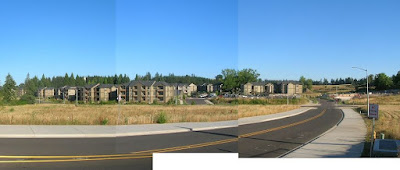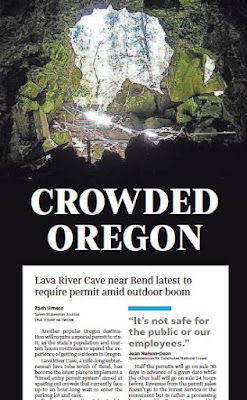At Council on Monday there is an interesting proposal to think about a 3/2 safety conversion with a buffered bike lane for Capitol Street NE between Center Street and Market Street.
 |
Three wide auto travel lanes at Mill Creek on Capitol
|
On the surface it follows logically the unsuccessful proposal for a system of protected bike lanes in the bond, and also the successful proposal to complete the eastern portion of the Union Street bikeway with full connections to the Esplanade.
Capitol Street here appears to be overbuilt for car travel.
The traffic count between Union Street NE and D Street NE showed a total daily traffic volume of 12,900 vehicles. The traffic count between D and Market Streets NE showed a total daily traffic volume of 12,800 vehicles. These traffic volumes are within the range that two travel lanes could accommodate and present an opportunity to consider removing a travel lane to accommodate a bike facility.
Capitol Street northbound is also part of a one-way couplet with Summer Street southbound. Summer Street in this section has only two car travel lanes, a bike lane, and two strips of parking. Another reason to redesign Capitol Street is to bring it into a symmetry with Summer Street. (But we might also ask, why not more protection on Summer Street also?)
 |
Summer St north of D, with two auto travel lanes only
|
Though few students are probably coming from the south, a bike lane on Capitol also would connect directly with Parrish and via D Street with North High.
There are real reasons to consider the proposal.
Yet the concept fits a little uneasily with adopted plans and looks to be an example of planning something before we have executed on a previous plan. It could be planning churn instead of good sequencing with construction to realize a previous plan.
Back in 2018 Council formally adopted the Winter Maple Bikeway Plan. While the City has made actual progress on the residential segment between D Street and Pine Street, the segments north and south of that remain unfinished.
 |
Maple-Winter Plan for downtown (2018)
|
In particular, there is already a plan for buffered bike lanes on Winter Street between Court Street and D Street. But no progress has been made on this.
As part of the conversation on the proposal for Capitol Street, the City should formally address how this new concept fits with plans for Winter Street downtown.
More bike lanes is always a good thing, of course! If we are going to meet our climate goals, every street needs provision for bicycling.
It will be great to learn more, and maybe there are very good reasons to move forward with this.
Other Council items will be in a separate post over the weekend.
(See all previous posts on the Winter Maple Plan here.)


















































